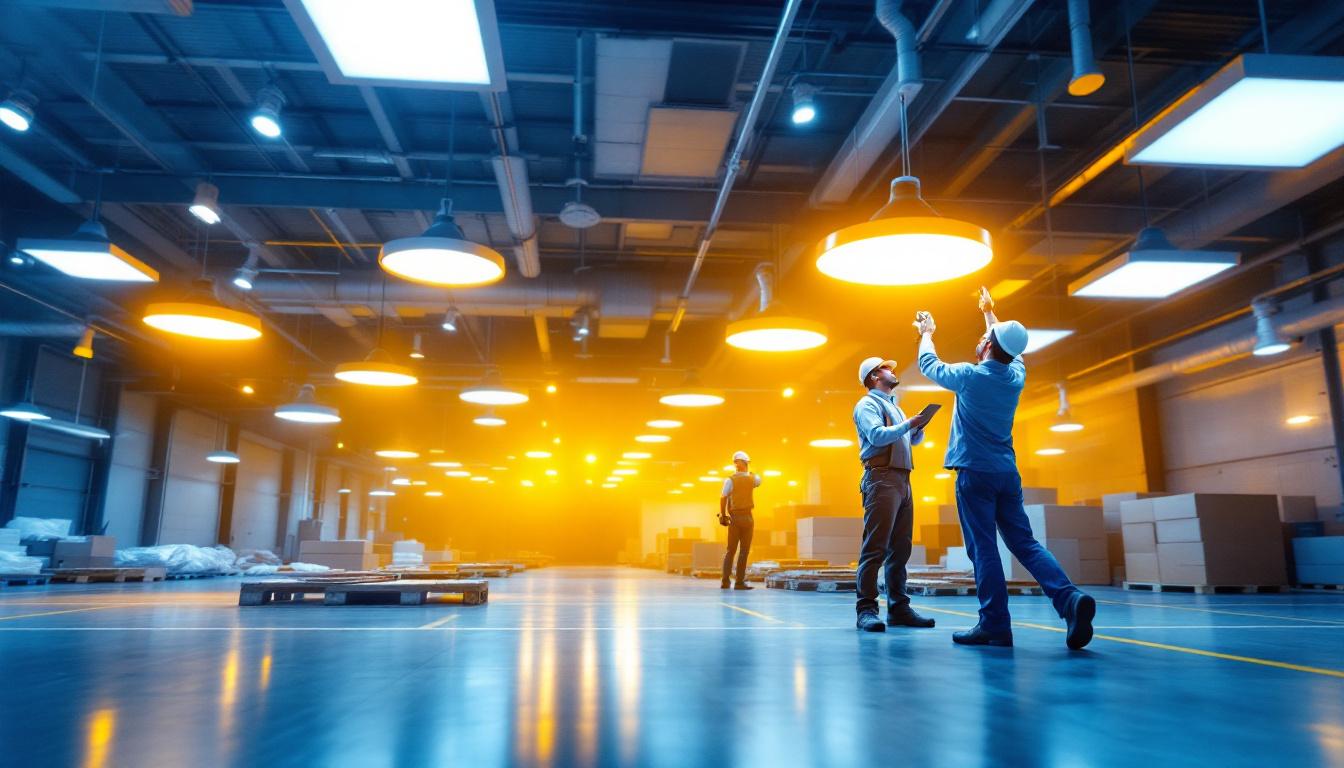
As a lighting contractor, understanding the intricacies of three-way switch terminals is essential for ensuring efficient and effective installations. This article delves into the components, wiring configurations, and practical applications of three-way switches, providing valuable insights for professionals in the field.
Three-way switches are crucial components in residential and commercial lighting systems, allowing users to control a single light fixture from two different locations. This functionality is particularly useful in hallways, staircases, and large rooms where multiple entry points exist. For instance, imagine walking into a long hallway from one end and needing to illuminate the space without having to walk all the way to the light switch at the opposite end. Three-way switches provide the perfect solution, enhancing both safety and convenience in everyday life.
Unlike standard single-pole switches, three-way switches do not have an on/off position. Instead, they work in tandem with another three-way switch, creating a circuit that can be completed from either switch. This design maximizes convenience and accessibility, making it a popular choice in modern electrical installations. Moreover, the versatility of three-way switches extends beyond just lighting; they can also be integrated into more complex systems, such as those controlling ceiling fans or outdoor lighting, thereby increasing their utility in various settings.
Each three-way switch consists of several key components: the switch body, terminals, and a mechanism for toggling the circuit. The switch body houses the internal mechanism, while the terminals are where the wires connect. Understanding these components is vital for proper installation and troubleshooting. Additionally, many modern three-way switches come equipped with features such as illuminated toggles or smart technology, allowing for remote control via smartphones or home automation systems, thus catering to the needs of tech-savvy homeowners.
Typically, a three-way switch features three terminals: one common terminal and two traveler terminals. The common terminal is where the power source or the load connects, while the traveler terminals connect to the other three-way switch. This configuration allows for the switching of the circuit between the two traveler wires. It’s important to note that the color coding of the wires—usually black for the common terminal and red or white for the travelers—plays a crucial role in ensuring that the installation is both safe and effective, preventing potential wiring errors that could lead to malfunction or hazards.
Wiring a three-way switch can be a bit more complex than standard switches, but understanding the configurations can simplify the process. The most common wiring method involves using two traveler wires and a common wire. For those who are new to electrical work, it can be beneficial to consult diagrams or instructional videos that illustrate the wiring process step by step, as visual aids can significantly enhance comprehension and execution.
In a typical setup, the power source may feed into the first three-way switch. From there, the common terminal connects to the light fixture, while the traveler terminals connect to the second three-way switch. This setup allows the circuit to be completed through either switch, enabling control from multiple locations. Furthermore, in more advanced configurations, it’s possible to incorporate additional switches, such as four-way switches, to control the same light fixture from three or more locations, which is particularly advantageous in larger homes or commercial spaces where accessibility is paramount. Understanding these configurations not only empowers homeowners to take control of their lighting systems but also fosters a greater appreciation for the intricacies of electrical design.
Properly identifying the terminals on a three-way switch is crucial for successful installation. Miswiring can lead to malfunctioning switches or even electrical hazards. Familiarity with the terminal markings is essential for any lighting contractor.
The common terminal is typically marked with a darker screw or a different color, often black or brass. This terminal is the primary connection point for either the power supply or the light fixture. Understanding its role in the circuit is fundamental for ensuring that the switch operates correctly.
When wiring, it is essential to connect the common terminal to the appropriate source. If the power comes directly to the switch, the common terminal should be connected to the incoming hot wire. Conversely, if the switch is at the end of the circuit, the common terminal should connect to the light fixture. This distinction is vital; incorrect connections can lead to lights that do not turn on or flicker unexpectedly, causing frustration and safety concerns for the homeowner.
Moreover, it’s important to note that the common terminal can also affect the overall functionality of the three-way switch system. If the common terminal is not correctly identified and connected, it may prevent the switch from completing the circuit, rendering the entire setup ineffective. Therefore, double-checking your connections and understanding the layout of your specific circuit is paramount for a successful installation.
The traveler terminals are usually marked with lighter-colored screws, often brass or silver. These terminals are interchangeable, meaning that either traveler wire can connect to either terminal. This flexibility allows for easier wiring and troubleshooting.
When connecting traveler wires, it is crucial to maintain consistency between the two switches. For instance, if one switch connects the traveler wire to the left terminal, the corresponding switch should do the same. This consistency ensures that the circuit functions correctly, allowing for seamless operation from either switch. In practice, this means that when one switch is flipped, it should reliably turn the light on or off, regardless of which switch is being used.
Additionally, understanding the traveler terminals can aid in diagnosing issues that may arise in the future. If a light fails to operate as expected, knowing how the traveler wires are connected can help pinpoint the problem. For example, if one switch operates correctly while the other does not, checking the connections at both traveler terminals can often reveal miswirings or loose connections that need to be addressed. This proactive approach can save time and effort in troubleshooting electrical problems down the line, ensuring a more reliable lighting system overall.
Even seasoned lighting contractors can encounter issues when working with three-way switches. Understanding common mistakes can help avoid potential problems and ensure a smooth installation process.
One of the most frequent mistakes is miswiring the terminals. This can lead to switches that do not function correctly or, in some cases, create a short circuit. To avoid this, always double-check the wiring against the circuit diagram before finalizing the connections.
Additionally, ensure that the common terminal is correctly identified and connected. Misplacing a traveler wire on the common terminal can disrupt the circuit, rendering the switches ineffective.
After installation, testing the circuit is essential. Use a multimeter to verify that the switches are functioning correctly. Check for continuity between the traveler terminals when toggling the switches. If continuity is not present, revisit the wiring to identify any errors.
It’s also advisable to test the light fixture itself. If the fixture does not illuminate, inspect the connections at both the switches and the fixture to ensure everything is secure and correctly wired.
Three-way switches are versatile and can be utilized in various applications, enhancing the functionality of lighting systems. Understanding these applications can help lighting contractors make informed decisions during installations.
In residential settings, three-way switches are commonly installed in hallways, staircases, and large living spaces. This allows homeowners to control lighting from multiple entry points, increasing convenience and safety.
For instance, installing three-way switches at both ends of a long hallway enables users to turn the lights on or off without having to walk the entire length. Similarly, in staircases, having switches at both the top and bottom enhances safety by ensuring that the lights can be turned on or off as needed.
In commercial environments, three-way switches can be utilized in larger spaces such as conference rooms, auditoriums, and retail areas. This flexibility allows for efficient lighting control, catering to different needs throughout the day.
For example, in a conference room, having multiple switches allows participants to adjust lighting based on the activity, whether it be a presentation or a discussion. This adaptability can enhance the overall experience and functionality of the space.
To ensure a successful installation of three-way switches, adhering to best practices is essential. These practices not only promote safety but also enhance the longevity and reliability of the lighting system.
Investing in high-quality switches and wiring is crucial for any installation. Quality components are less likely to fail and can withstand the demands of daily use. Look for switches that meet industry standards and have a good reputation for reliability.
Additionally, using the appropriate gauge of wire is important. Ensure that the wire can handle the load of the lighting fixtures and is suitable for the installation environment. This attention to detail can prevent overheating and electrical failures.
Adhering to local electrical codes and regulations is not only a legal requirement but also a best practice for ensuring safety. Familiarize yourself with the specific codes in your area, as they can vary significantly.
Incorporating necessary safety measures, such as using proper grounding techniques and ensuring that all connections are secure, can help prevent accidents and ensure compliance with regulations.
Understanding three-way switch terminals is a fundamental aspect of being a successful lighting contractor. By familiarizing oneself with the components, wiring configurations, and best practices, contractors can ensure efficient installations that meet client needs.
As the demand for versatile lighting solutions continues to grow, mastering the intricacies of three-way switches will position contractors for success in both residential and commercial projects. By prioritizing quality, safety, and adherence to regulations, lighting professionals can deliver exceptional results that enhance the functionality and aesthetic appeal of any space.
Ready to elevate your lighting installations with the best three-way switches on the market? Look no further than LumenWholesale for all your lighting needs. Our spec-grade lighting products are designed to meet the highest industry standards, ensuring you deliver reliable and high-performance lighting solutions. With unbeatable wholesale prices and the convenience of free shipping on bulk orders, you can stock up on quality lighting without breaking the bank. Don’t compromise on quality or value; choose LumenWholesale for Wholesale Lighting at the Best Value and make your next project shine.

Discover essential strategies and tips for lighting contractors to excel in the industry.

Discover the surprising advantages of flickering light bulbs for lighting contractors.

Discover how warehouse LED light fixtures are revolutionizing the lighting industry, offering contractors enhanced efficiency, sustainability, and cost-effectiveness.

Discover essential tips and best practices for lighting contractors installing big ceiling fans in shops.